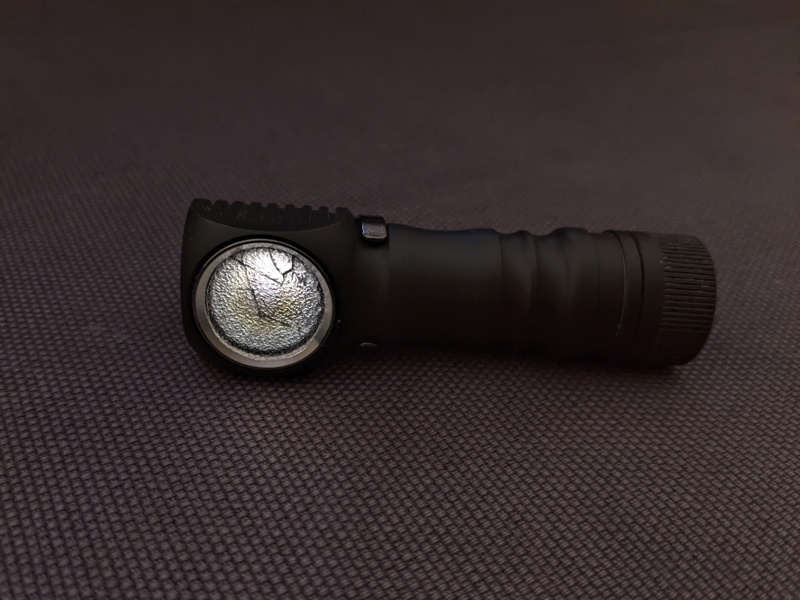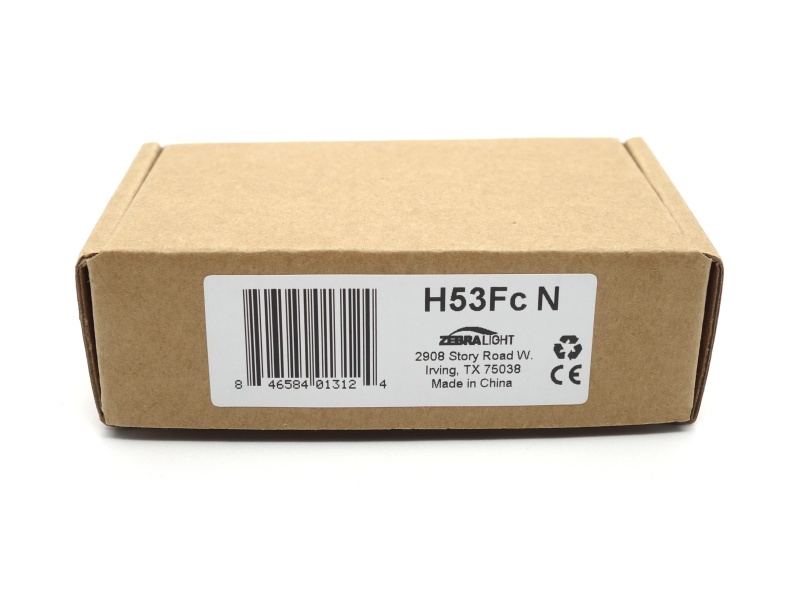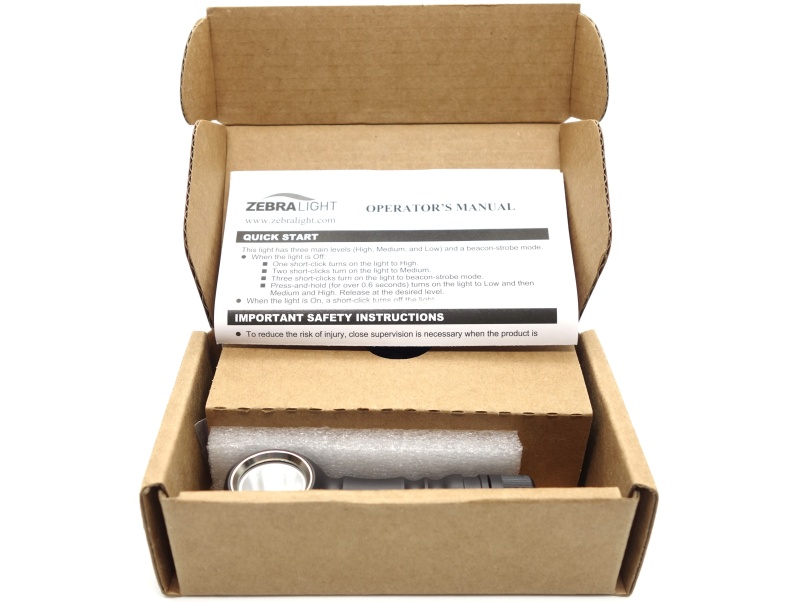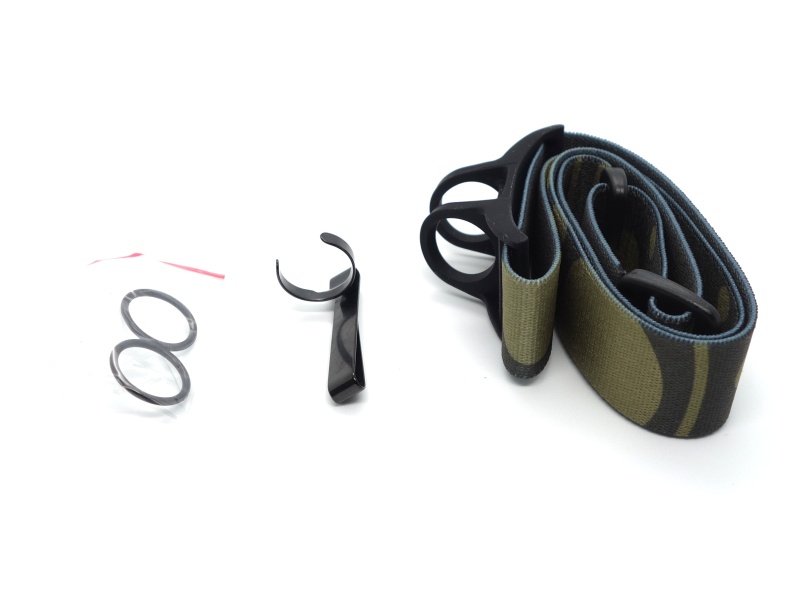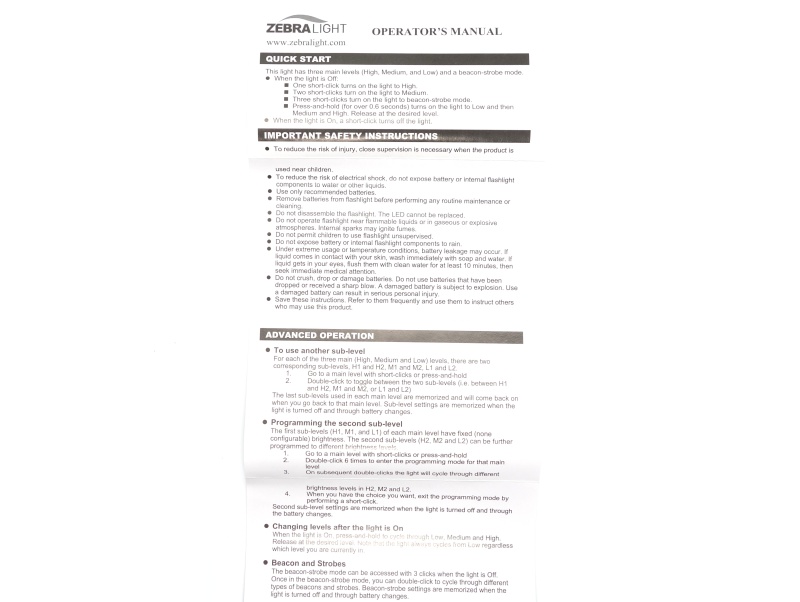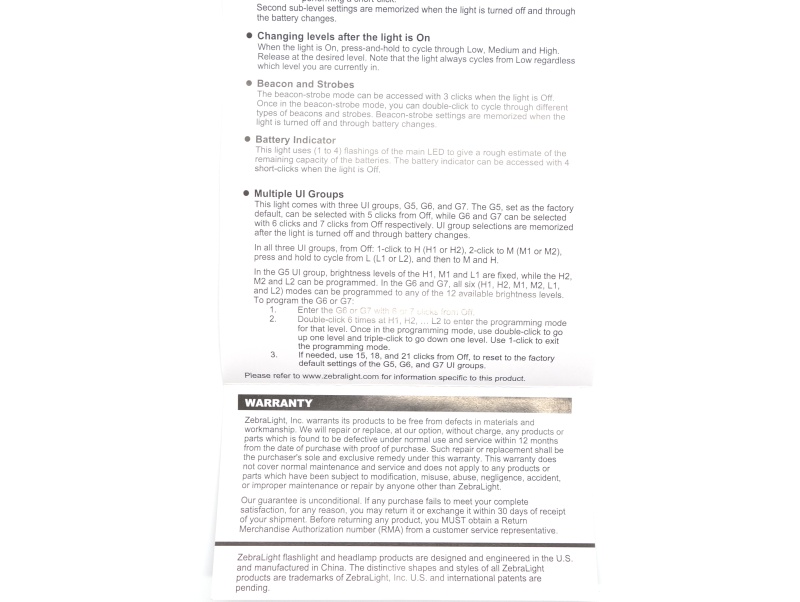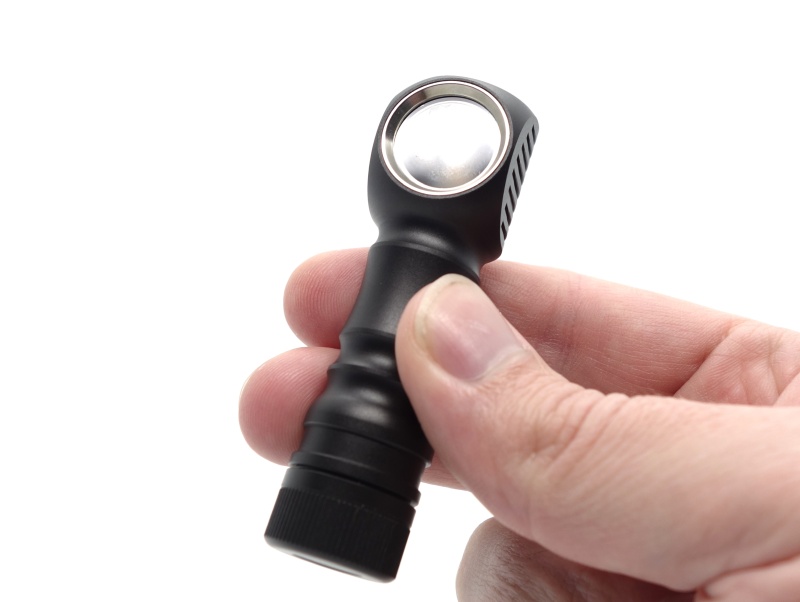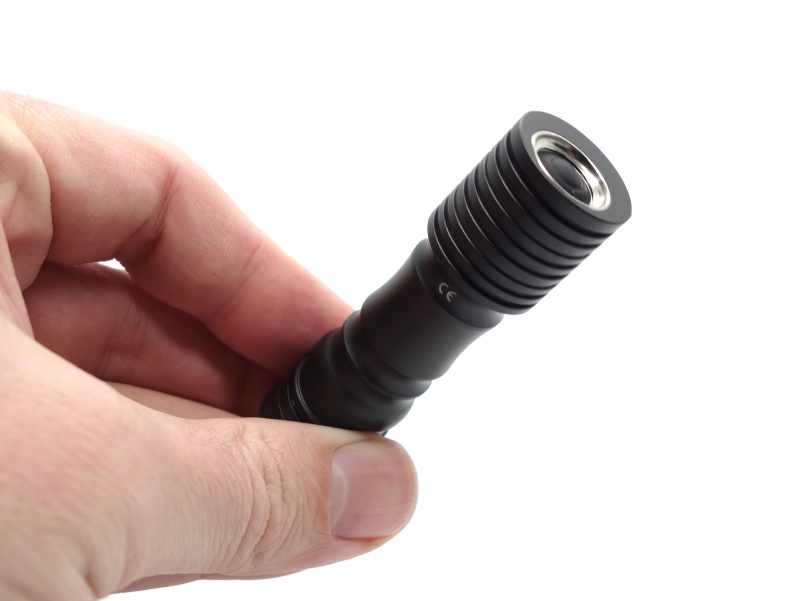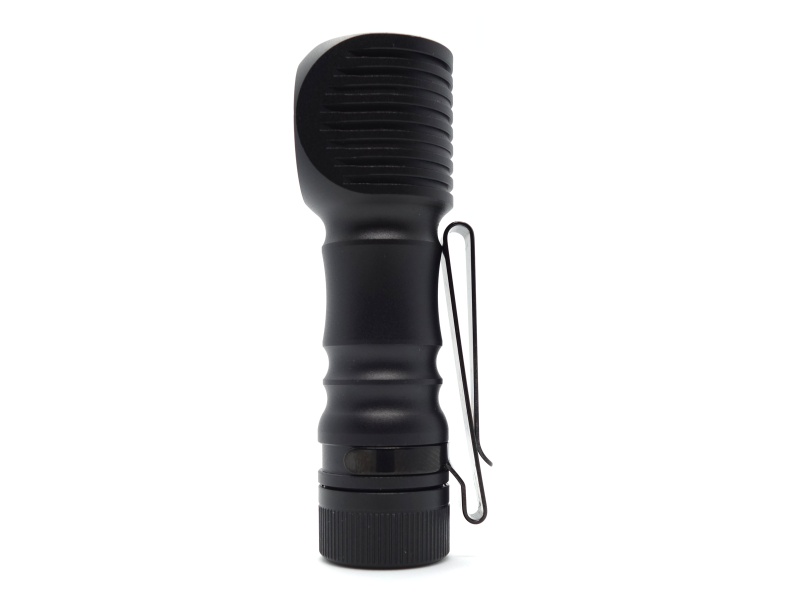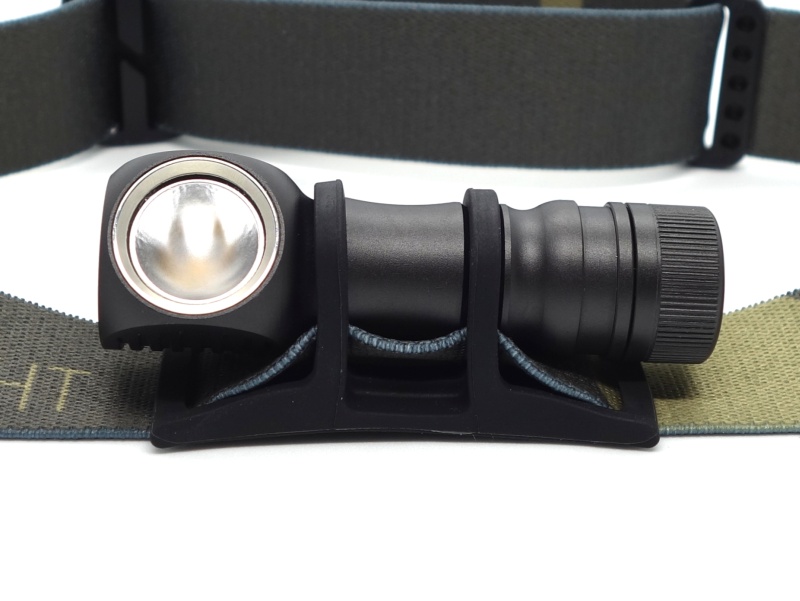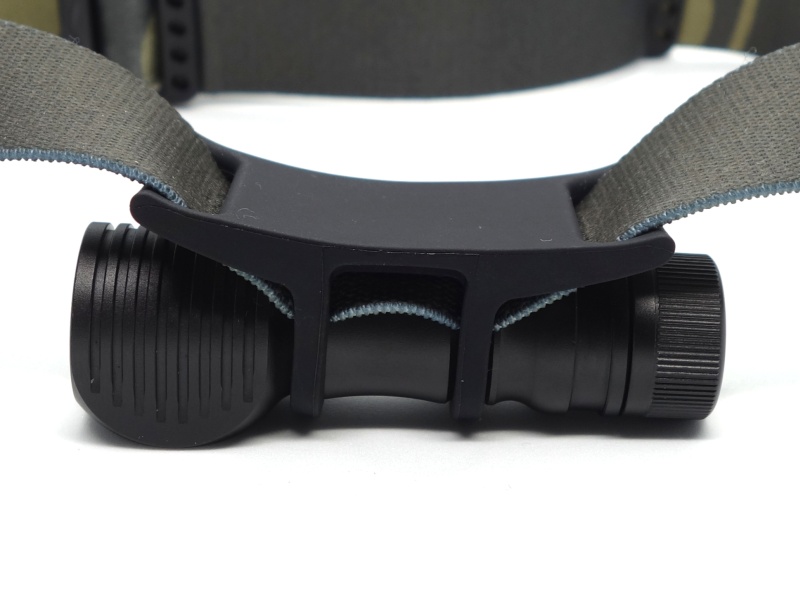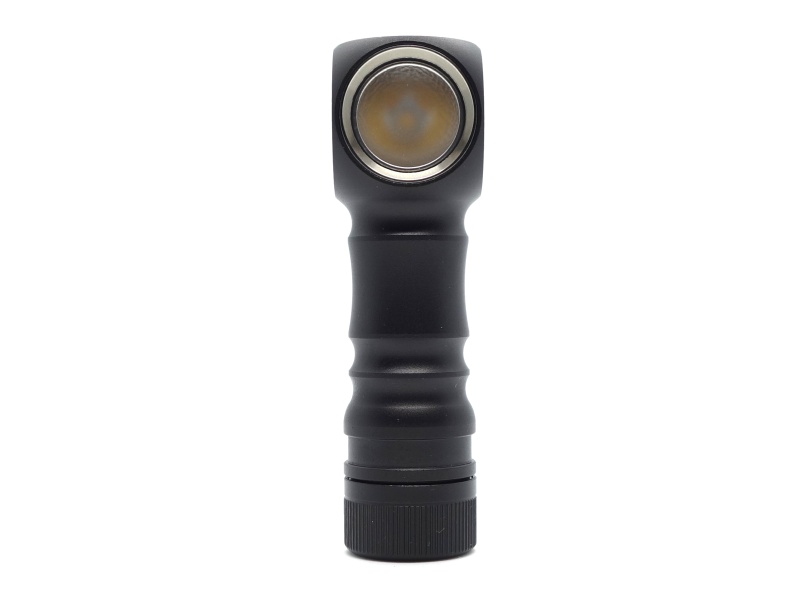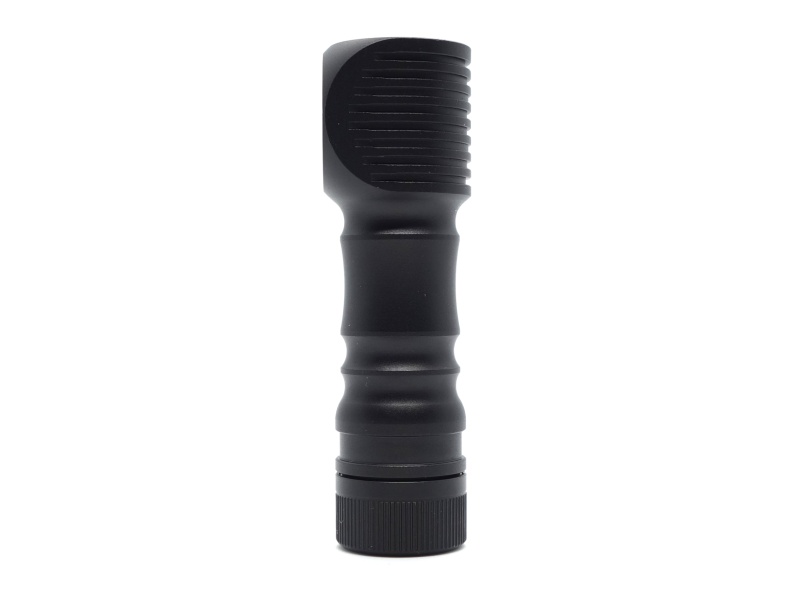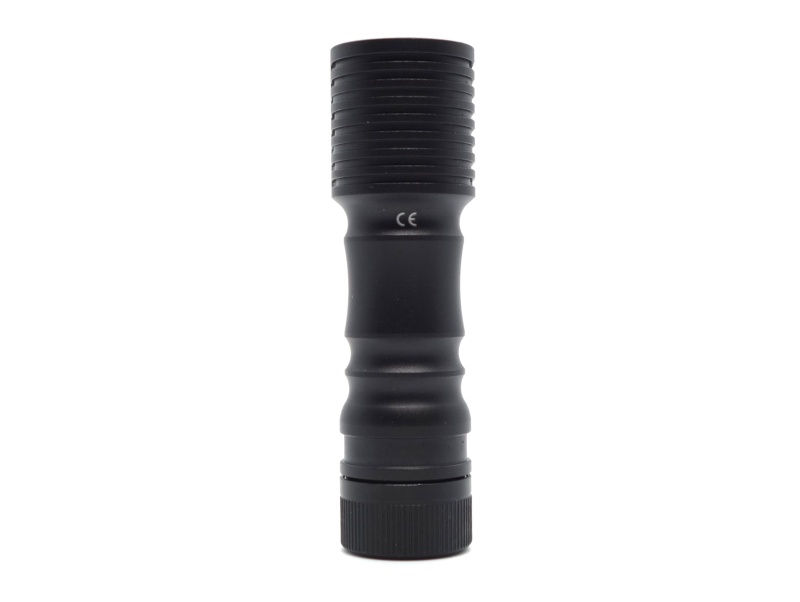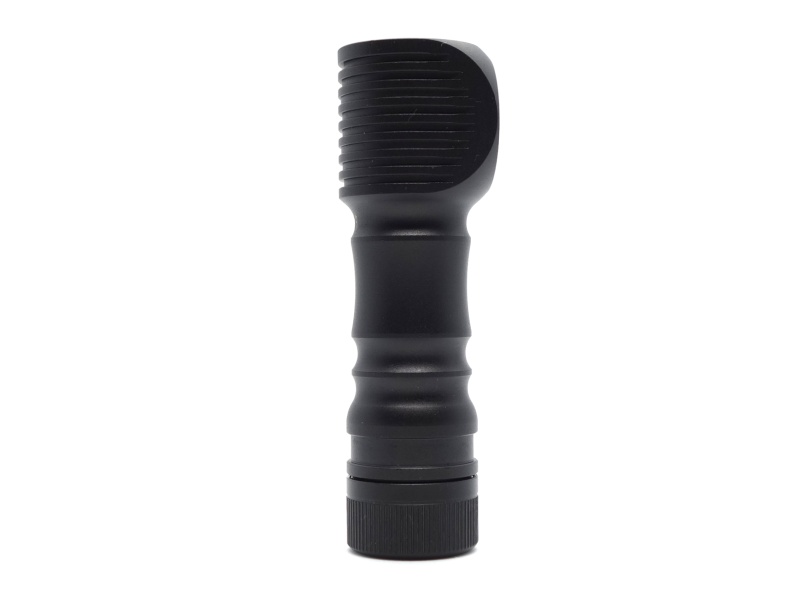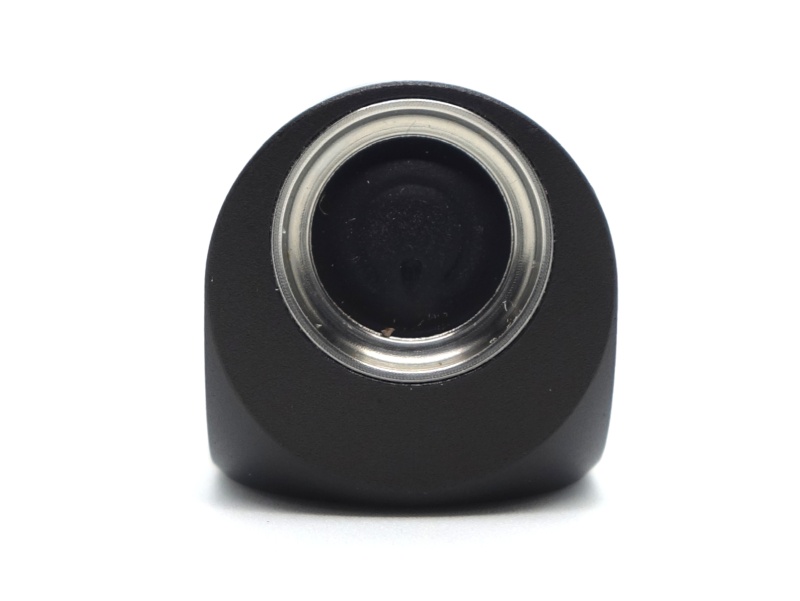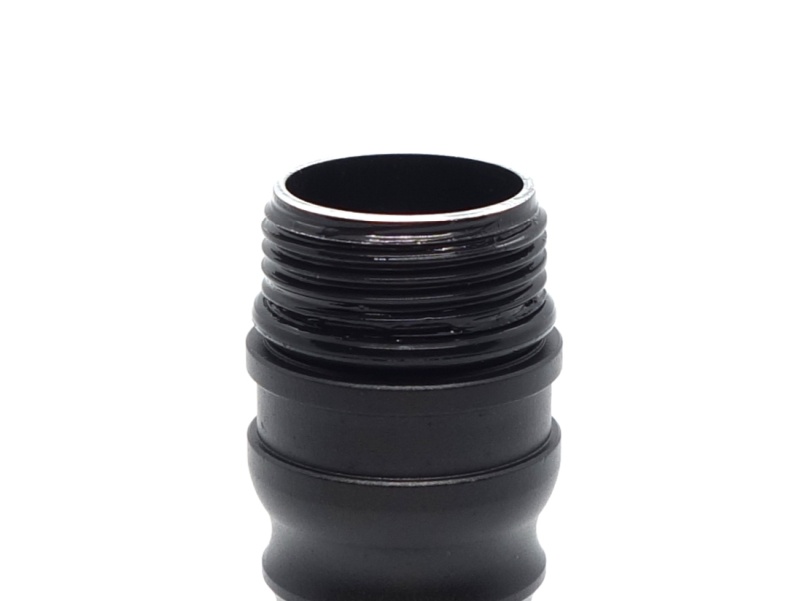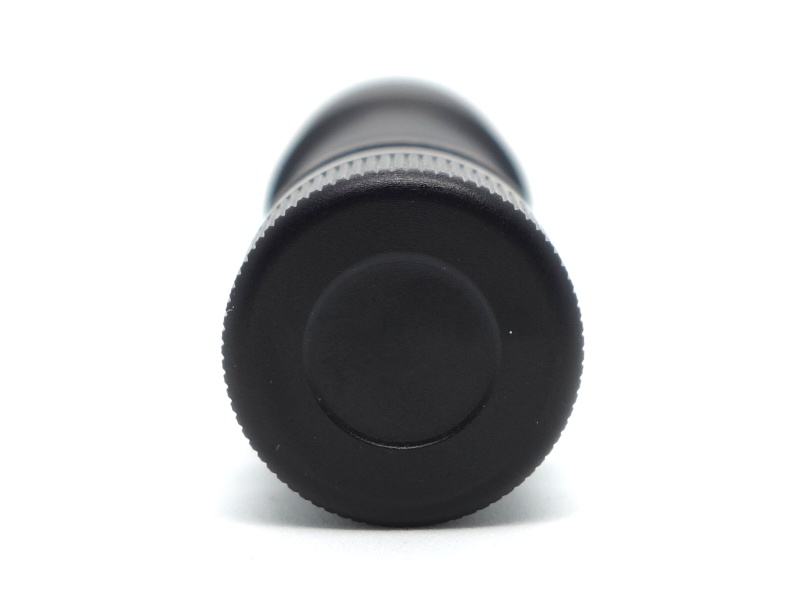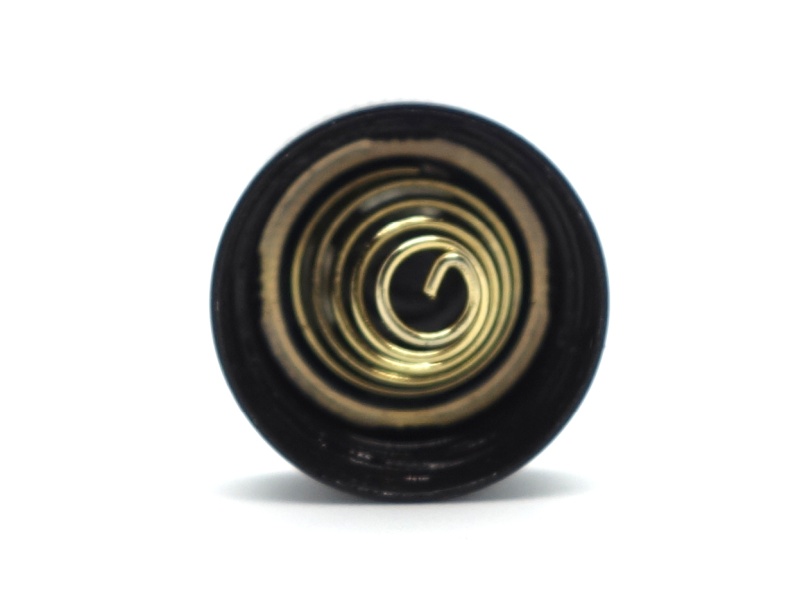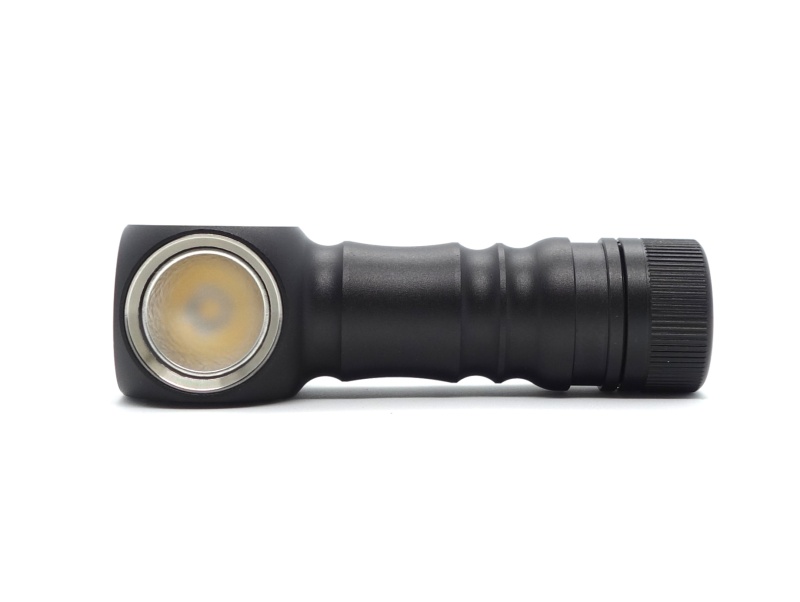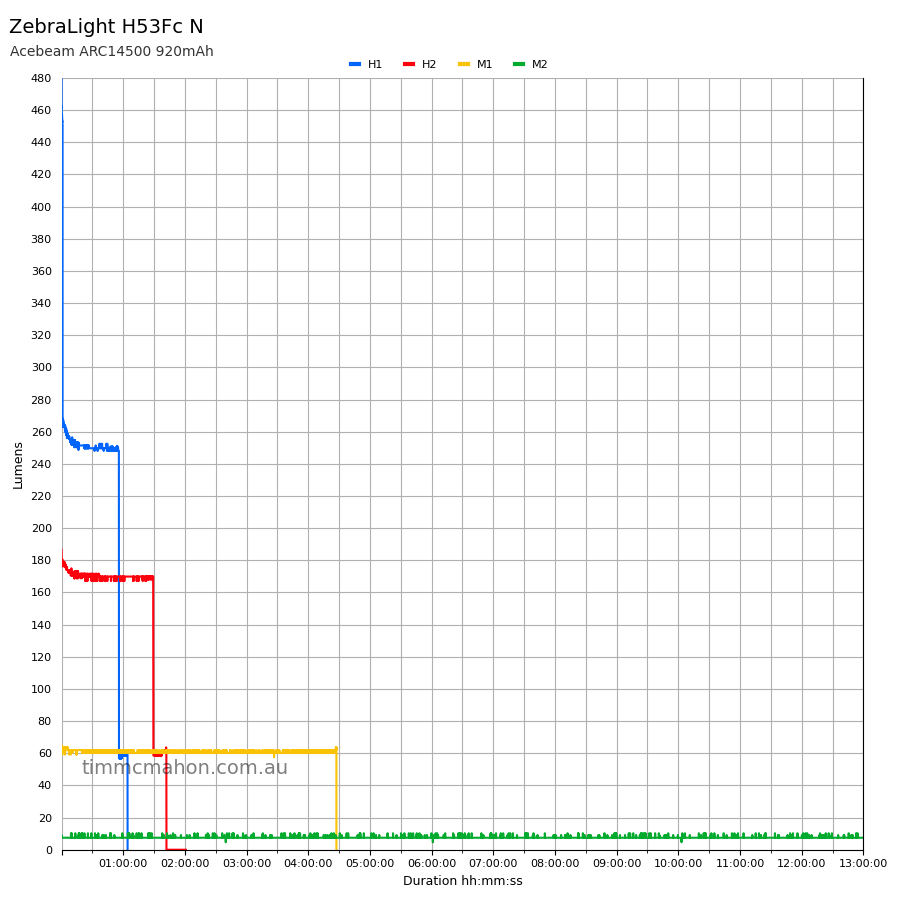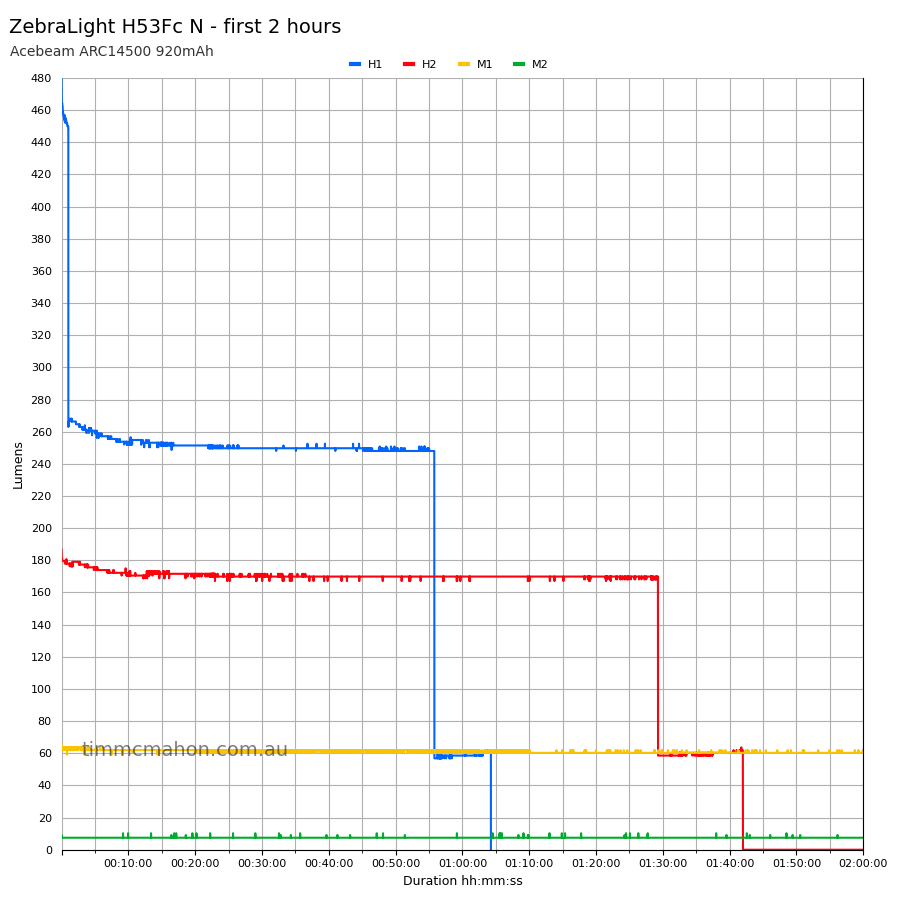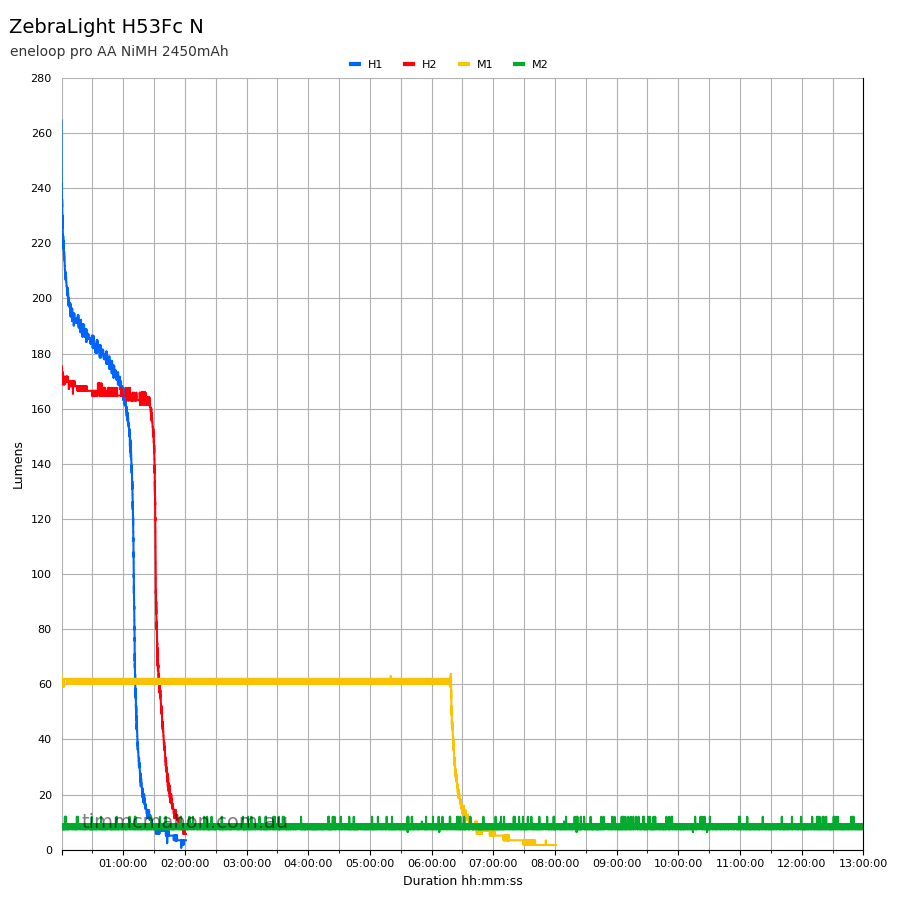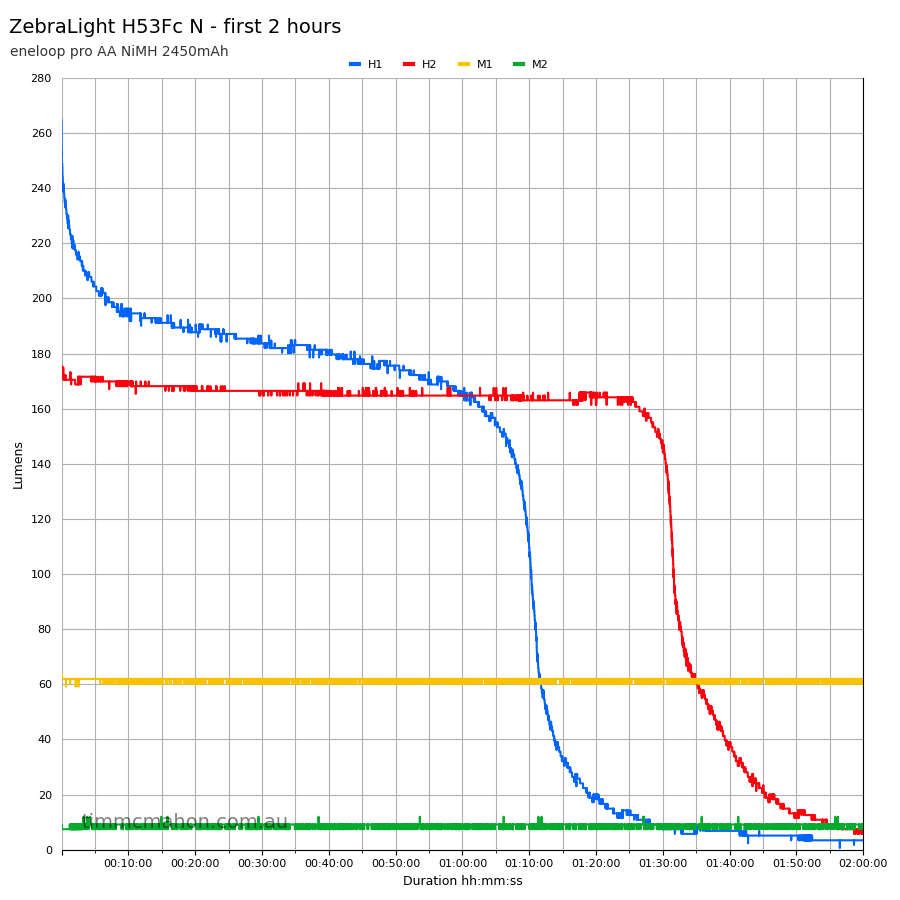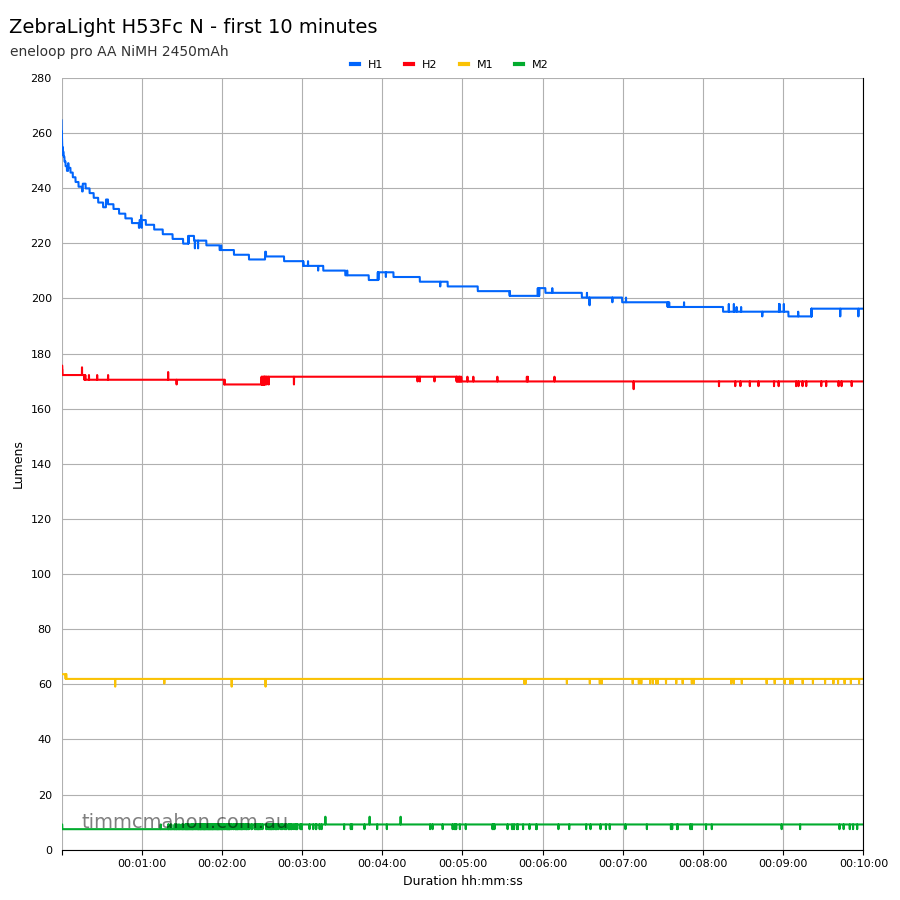ZebraLight H53Fc N Nichia 519A Headlamp Review
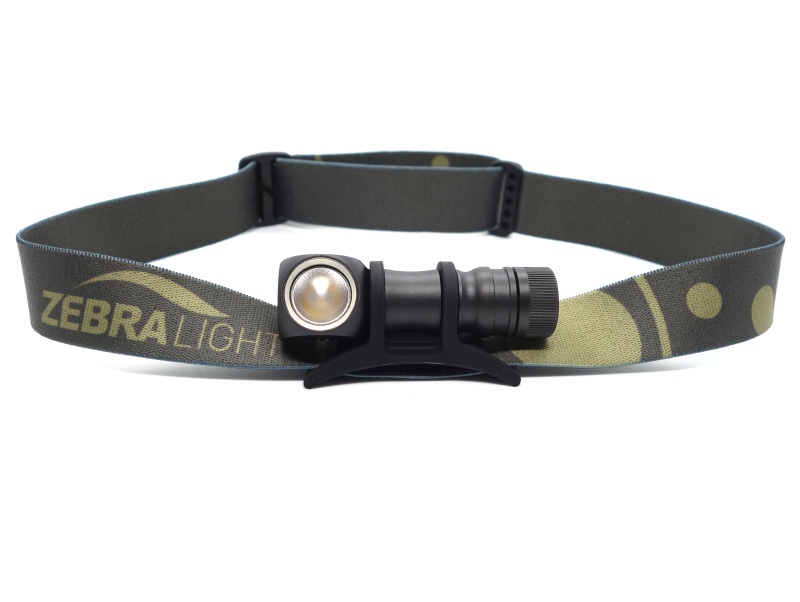
ZebraLight H53Fc N Headlamp#
- Specifications
- Introduction
- Torch in use
- Build quality
- LED, bezel, lens, reflector and beam
- Size and comparison
- User interface
- Batteries and charging
- Performance
- Beamshots
- Conclusion
- Price
- Product page
Specifications#
| Brand/model | ZebraLight H53Fc N |
|---|---|
| LED | Nichia 519A-V1 4000K 93 CRI |
| Maximum lumens | ? lm |
| Maximum beam intensity | ? cd |
| Maximum throw | ? m |
| Battery | AA |
| Onboard charging | No |
| Material | Aluminium |
| Modes | 3 |
| Blinkies | Beacon, Strobe |
| Reflector | OP with a frosted lens |
| Waterproof | IPX8 |
| Review date | August 2023 |
Introduction#
ZebraLight has a pretty good reputation for building reliable and efficient torches.
The search for a torch capable of producing an extremely dim light ended with me stumbling across ZebraLight and discovering a passion for torches in 2020.
I wanted a dim torch so that I could get up late at night and heat baby formula for our newborn baby without waking everyone up.
I looked at BLF, CPF, r/flashlight and I eventually bought the ZebraLight SC64c LE. I also ordered a ZebraLight H600Fc Mk IV headlamp, thinking that I could use that while changing nappies at night (Yeah, no. It is easier to use a bedside lamp).
A birthday present for dad#
My dads birthday was coming up so I ordered a ZebraLight H53Fc, a AA sized headlamp. This was just as the pandemic started, when ZebraLight used to ship direct from China to countries like Australia.
I later ordered the SC64w HI from the US, and the SC700d through a local dealer: brightnite.com.au. I had to return the SC64w HI under warranty due to the lens rattling but I digress.
My dad asked whether I could do something about the lens in his H53Fc. The lens had cracked after carrying it every day for three years while farming. He uses it with the pocket clip attached instead of in a headband and it had been dropped and run over by his truck multiple times.
The lens was being held together with some sticky tape. I removed the tape, cleaned the broken glass up, and then I applied d-c-fix film to make it safe.
Awesome customer service#
I was not content with the temporary fix, so I reached out to ZebraLight to see if I could buy a replacement glass lens. They recommended contacting a local dealer to see if it could be included in their next order.
I asked brightnite.com.au and they did something even better! They sent my dad a new H53c LE for free.
The obsession with ZebraLight continues#
While visiting China recently, I returned the SC700d because one of the dies in the emitter was a bit dark. After that was replaced, I asked if I could buy the newly released H53Fc N headlamp with a Nichia 519A emitter. ZebraLight kindly agreed to sell it.
Anecdotally, quality control has been a bit hit and miss with the SC64w HI and the SC700d. But I keep coming back to ZebraLight.
I went out of my way to buy this torch. It would be awesome if more dealers stock ZebraLight locally!
I have not been paid for this review nor have I held back my opinions of this torch.
Packaging#
The H53Fc N came in a plain cardboard box with some foam.
The following was included in the box:
- ZebraLight H53Fc N
- Headband
- Pocket clip
- Spare o-ring
- User manual
Torch in use#
The ZebraLight H53Fc N is a lightweight AA sized headlamp that can either be carried on its own or used in a headband.
What’s so special about this headlamp? It has a Nichia 519A emitter that produces a nice beam.
The H53Fc N is tiny in my hand.
The pocket clip snaps on securely. It can be clipped in the intended position or reversed and attached near the head (as above).
The headlamp can tailstand. There is no lanyard hole or lanyard.
Improving the comfort#
By default, the silicone mount has two edges that dig into my forehead.
I stumbled across a pretty cool hack online years ago that makes the headband much more comfortable!
- Unclip the headband near the loop. There is a plastic clip with an angled space to take the headband out.
- Pull the headband out of the silicone mount.
- Insert one end of the headband through the back of one of the slots in the mount.
- Pull the headband through the two rings in the mount.
- Insert the end through the front of the second slot in the mount.
- Clip the headband back on at the loop.
This is what it looks like:
It is so much more comfortable! I do this with all of my ZebraLight headlamps. This hack also makes it easier to rotate the headlamp and take the headlamp out of the mount.
Build quality#
The headlamp has an aluminum body with ZebraLight-gray anodising. There are no sharp edges.
One thing that continues to impress me about ZebraLight torches is how compact they are. The ZebraLight SC64c LE is very compact for an 18650 torch and the H53Fc N is very compact for a AA sized headlamp.
The body is smooth while the head has fins to provide a bit of grip.
The button gives an audible and satisfying click. The switch cover does not feel squishy.
The threads came with a lot of lubricant. I used the excess lubricant to lubricate some of my other torches.
The tailcap turns smoothly and it is easy to attach to the tube.
A spring in the tailcap provides plenty of pressure to keep a AA battery pressed against the head. The head only has two small wires soldered to the driver for the battery to press against.
ZebraLight states that the torch has battery reverse polarity protection. I connected a bench power supply to the headlamp with the polarity reversed and the headlamp survived 1.5V. I do not recommend inserting the battery backwards.
LED, bezel, lens, reflector and beam#
The ZebraLight H53Fc N has a Nichia 519A-V1 4000K 93 CRI emitter with an orange peel reflector and a frosted glass lens.
A bezel has been press fit.
CCT, CRI, and duv#
I have taken Correlated Colour Temperature (CCT) and Colour Rendering Index (CRI, RA of R1-R8) measurements with the torch positioned half a metre away from an Opple Light Master Pro III (G3).
The CCT is around 3780K. The CRI is around 97.
The Delta u, v is near zero. It is close to pure white.
The beam produced has a smooth hot spot that blends into a relatively small spill. I find myself using the two highest modes to get the most out of the emitter.
| Mode | CCT (K) | CRI (Ra) | x | y | Duv |
|---|---|---|---|---|---|
| M2 | 3747 | 97.3 | 0.3931 | 0.3852 | 0.0004 |
| M1 | 3764 | 97.4 | 0.3923 | 0.3850 | 0.0005 |
| H2 | 3798 | 97.3 | 0.3907 | 0.3843 | 0.0006 |
| H1 | 3811 | 97.3 | 0.3900 | 0.3836 | 0.0005 |
Calculate Duv from CIE 1931 xy coordinates
Dimensions and size comparison#
Dimensions#
I took the following measurements using a digital caliper.
| Measurement | Unit (mm) |
|---|---|
| Length | 75.7 |
| Head width | 21.85 |
| Head depth | 22.48 |
| Tube pocket clip diameter | 18.66 |
| Tube pocket clip width | 4.12 |
| Tail diameter | 20.0 |
Weight#
I took the following measurements using a digital scale.
| Weight | Unit (g) |
|---|---|
| Torch | 31.27 |
| Headband | 30.57 |
| Battery | 30.20 |
| Torch with headband | 61.84 |
| Torch with headband and battery | 92.04 |
The battery measured was an eneloop pro AA Ni-MH 1.2V 2450mAh cell.
Size comparison with its competition#
From left to right: ZebraLight H53Fc N, Skilhunt H04 RC Mini, ZebraLight H502pr, Manker E02II
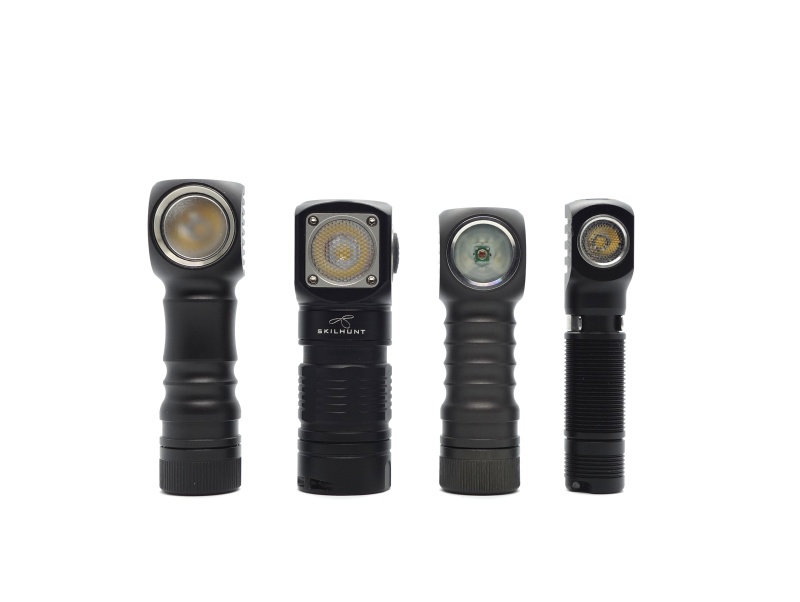
From left to right: ZebraLight H53Fc N, Skilhunt H04 RC Mini, ZebraLight H502pr, Manker E02II
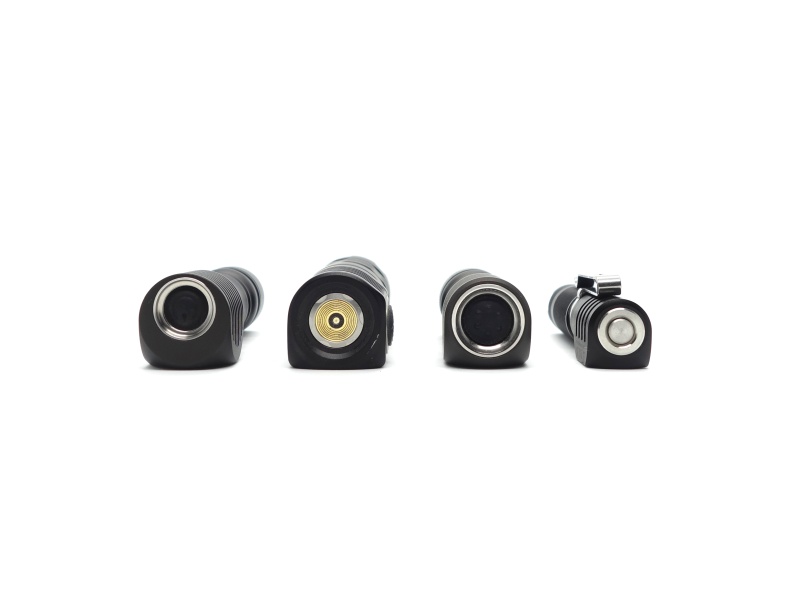
User interface#
The user interface that ZebraLight uses can be quite complicated to configure but simple to use.
The H53Fc N has an electronic switch where you can access High, Medium and Low from off with a click, double click or by holding the button. It can be as simple as that.
Here is a non-exhaustive list of some of the shortcuts:
| UI group | State | Action | Result |
|---|---|---|---|
| G5 | Off | Click | High |
| G5 | Off | Two clicks | Medium |
| G5 | Off | Press and hold for < 0.6 seconds | Low |
| G5 | Off | Three clicks | Beacon-strobe |
| G5 | Off | Press and hold for > 0.6 seconds | Cycle (Low, Medium, High) |
| G5 | On | Click | Off |
| Any | Beacon-strobe | Two clicks | Cycle (0.2Hz Low, 0.2Hz H1, 4Hz H1, 19Hz H1) |
| Any | Beacon-strobe | Click | Off |
| Any | On | Press and hold | Cycle (Low, Medium, High) |
| Any | Off | Four clicks | Battery indicator |
| Any | Off | Five clicks | Mode group 5 |
| Any | Off | Six clicks | Mode group 6 |
| Any | Off | Seven clicks | Mode group 7 |
| Any | Off | Fifteen clicks | Reset mode group 5 |
| Any | Off | Eighteen clicks | Reset mode group 6 |
| Any | Off | Twenty-one clicks | Reset mode group 7 |
You can configure Group 6 and 7 much more than Group 5 (default group).
Visit zebralight.com for more information about the user interface or see the user manual above.
Beacon and strobe#
The Zebralight website states that the “Beacon-strobe” mode has the following:
- 0.2Hz Beacon at Low
- 0.2Hz Beacon at H1
- 4Hz Strobe at H1
- 19Hz Strobe at H1
Battery status indicator#
The torch will flash 1-4 times to give a rough estimate of the remaining battery capacity.
Low voltage protection#
There is low voltage protection for a Ni-MH cell. The light turned off at 0.77V and the current stopped.
I tested low voltage protection by connecting the driver of the torch to a bench power supply and then by lowering the voltage from 1.5V to 0V for a Ni-MH cell.
PWM#
There is some flickering on L1. My Opple Light Mater Pro III (G3) measured a modulation depth of 30%.
What I like about the UI#
- Simple to use (difficult to configure).
- The output levels can be configured.
What could be improved#
- It can be annoying when the light temporarily enters H1 and then goes to M1 while performing a double click from off. It would be better if it did not flash a bright light while entering M1. jon_slider on BLF reminded me of this. I use Group 6 and 7, and configure my ZebraLight torches so that M1 and M2 are the brightest to avoid this issue. I configure H1 and H2 to be the lowest so that a single click from off doesn’t wake everyone up!
- The UI froze once in low mode when turning the headlamp on. I fixed this by taking the battery out and putting it back in again. I have noticed this UI bug on other ZebraLight torches.
- The UI got stuck in a strobe mode. I couldn’t turn it off by clicking the button. I fixed it by taking the battery out and putting it back in again.
Batteries and charging#
Battery#
No battery was included in the box.
According to ZebraLight, the headlamp has an operating voltage range of 0.7V to 2.0V.
| Size | Chemistry | Voltage | Supported |
|---|---|---|---|
| AA | Ni-MH | 1.2V | Yes |
| AA | Lithium primary | 1.8V | Yes |
| AA | Alkaline | 1.5V | Yes |
| 14500 | Li-ion | 3.7V | No |
14500 3.7V Li-ion cells are not officially supported. I tried a Li-ion cell and it worked. I decided to try a Li-ion cell because earlier versions of the driver had supported a Li-ion cell at one point.
Update (1st November 2023): ZebraLight have started to use a new SC54/H54 driver in the SC53 and that has not been tested with a Li-ion cell. Some users have reported that the SC53 is no longer Li-ion friendly. I wouldn’t be surprised if ZebraLight started using the upcoming H54 driver in new batches of the H53Fc N.
Charging#
There is no onboard charging.
Performance#
The user manual and the ZebraLight website did not include information about the runtime, light output, and beam distance at the time of writing.
Here are runtime estimates for the discontinued ZebraLight H53Fc with a CREE XP-L2 4000K 93-95 CRI emitter:
Light Output (runtimes)
High: H1 276 Lm (0.9 hr) or H2 230 Lm (1.6 hr) / 165 Lm (2.3 hrs) / 102 Lm (4.2 hrs)
Medium: M1 55 Lm (8.5 hrs) or M2 25Lm (21 hrs) / 10 Lm (41 hrs) / 3.4 Lm (4.5 days)
Low: L1 1.0 Lm (13 days) or L2 0.26 Lm (1.1 month) / 0.06 Lm (2.2 months) / 0.01 Lm (3.3 months)
I used an eneloop pro AA Ni-MH 1.2V 2450mAh cell and an Acebeam ARC14500 920mAh 3.7V Li-ion cell for the following tests.
Lumen measurements#
I used a UNI-T UT210E clamp meter to measure the current at turn on.
| Cell | Mode | Amps at start | Specs | Lumens @turn on | Lumens @30 sec | Lumens @10 min |
|---|---|---|---|---|---|---|
| Ni-MH | M2 | 0.05 A | 7 | 7 | 9 | |
| Ni-MH | M1 | 0.34 A | 63 | 61 | 61 | |
| Ni-MH | H2 | 1.10 A | 175 | 170 | 169 | |
| Ni-MH | H1 | 2.22 A | 264 | 234 | 196 | |
| 14500 | M2 | 0.02 A | 7 | 7 | 7 | |
| 14500 | M1 | 0.19 A | 65 | 63 | 61 | |
| 14500 | H2 | 0.60 A | 186 | 177 | 170 | |
| 14500 | H1 | 1.93 A | 479 | 455 | 252 |
The light output of the H53Fc N is slightly lower than the H53Fc.
Standby drain#
I measured 2.2 µA with an eneloop pro AA Ni-MH 1.2V 2450mAh cell inserted.
I measured 6.5 µA with an Acebeam ARC14500 920mAh 3.7V Li-ion cell inserted.
Measurements were taken using a UNI-T UT139C digital multimeter.
Runtime graphs#
I used my own DIY lumen tube with a TSL2591 sensor and forked bmengineer’s project RuTiTe to record runtimes.
Note: Lumen measurements may be off by 10% with my DIY lumen tube.
The room temperature was approximately 10 C.
Runtime#
Here is a summary of the runtime results:
| Cell | Mode | User manual | Runtime | Turn off | Final voltage |
|---|---|---|---|---|---|
| 14500 | H1 | 1h 4min 15s | 1h 4min 15s | 2.99 | |
| 14500 | H2 | 1h 41min 58s | 1h 41min 58s | 3.19 | |
| 14500 | M1 | 4h 27min 21s | 4h 27min 21s | 3.29 | |
| 14500 | M2 | 13h+ | 13h+ | 3.80 | |
| Ni-MH | H1 | 1h 18min 49s | 2h+ | 0.86 | |
| Ni-MH | H2 | 1h 47min 20s | 2h+ | 1.05 | |
| Ni-MH | M1 | 7h 0min 18s | 8h+ | 0.83 | |
| Ni-MH | M2 | 13h+ | 13h+ |
“Runtime” is the time until the output reduces to 10% of the output at 30 seconds (as per the ANSI/PLATO FL1 2019 Standard).
“Turn off” is the time until my DIY lumen tube no longer detects more than 1 lumen.
“+” indicates that the light remained on after recording had stopped.
The runtime results of the H53Fc N are similar to the H53Fc.
The sustained output on Medium modes is impressive for an AA sized headlamp.
H1 and H2 with a 14500 cell continued with an output below 1 lumen for more than 2 hours.
There is a reduced capacity and runtime when selecting an AA sized headlamp over an 18650 headlamp. I would recommend the H600Fc Mk IV for a better capacity while still being relatively lightweight. But I personally prefer this AA sized headlamp for casual use where I do not need higher output sustained for hours.
Throw#
I took lux measurements with a UNI-T UT383BT at 30 seconds. M2, M1, H2 and H1 were measued at one metre.
| Cell | Mode | Specs (cd) | Specs (m) | Candela measured (cd) | Distance (m) |
|---|---|---|---|---|---|
| Ni-MH | M2 | 22 | 9 | ||
| Ni-MH | M1 | 194 | 27 | ||
| Ni-MH | H2 | 548 | 46 | ||
| Ni-MH | H1 | 723 | 53 |
Beamshots#
I went to a local park and aimed the ZebraLight H53Fc N at a tree 70 metres away while using H1.
Beamshots were taken using a Sony RX100M2 using 3.2", f3.2, ISO 100, 5000K WB.
ZebraLight H53Fc N (H1)#
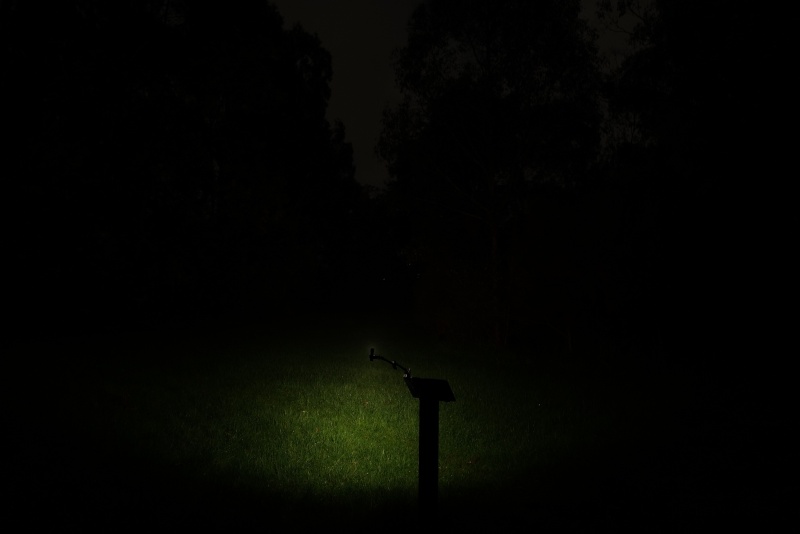
Acebeam H16 Gray (Turbo)#
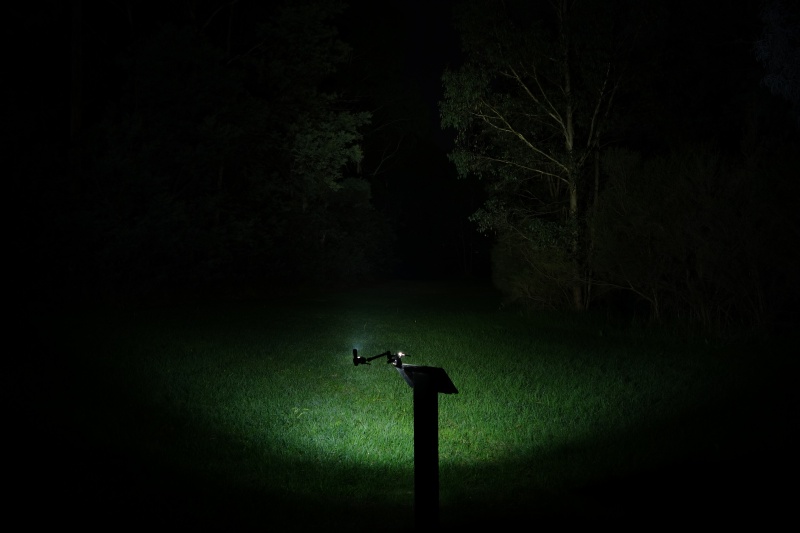
Cyansky HS5R#
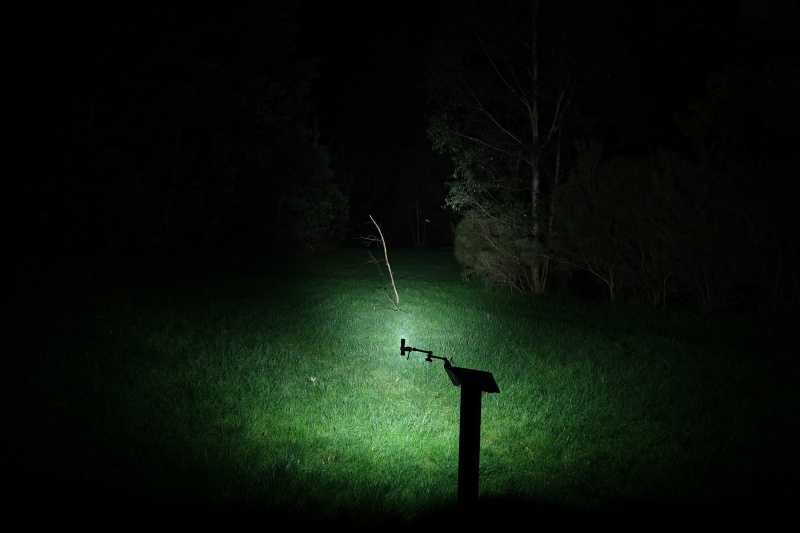
Brinyte HL18 Noctua#
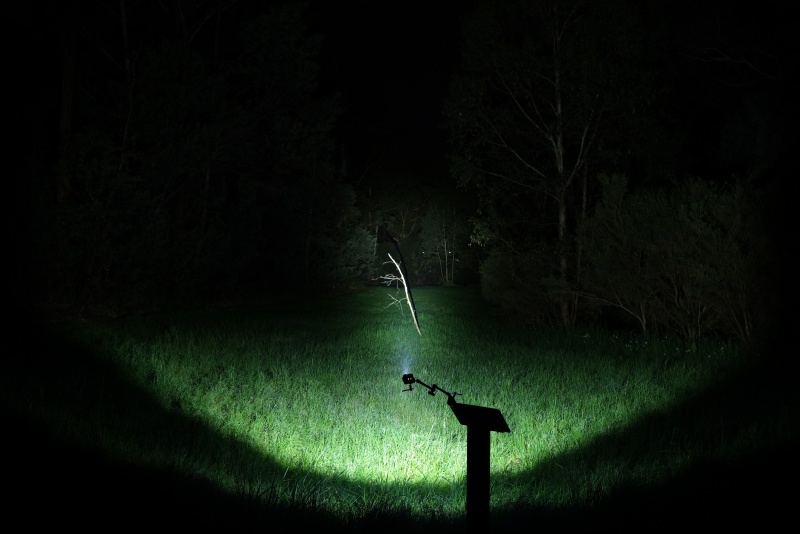
Conclusion#
It is great to see ZebraLight using Nichia 519A emitters! The beam produced looks closer to pure white and it does not have tint shift.
The H53Fc N sacrifices light output and runtime in favour of having an nicer tint compared to the H53Fc.
It would be even better if the bezel was not press fit so that the emitter can be easily dedomed. A 519A emitter with the dome removed will end up producing a rosy beam.
If you want a particular ZebraLight torch with a different emitter then I would highly recommend reaching out to Bob_McBob on BLF.
Official support for a 14500 3.7V Li-ion cell would be nice to try to achieve a higher output.
There are a few UI bugs (mentioned above). I wish that ZebraLight would fix the bug where the torch freezes when turning it on. I have noticed this with multiple different torches from ZebraLight. It happens very rarely but when it happens I need to unscrew the tailcap to turn the torch off and on again.
Would I recommend the ZebraLight H53Fc N? Yes. I absolutely love the low moonlight modes and how compact this torch is.
Pros:#
- Excellent build quality.
- Comfortable headband.
- Very low moonlight modes.
- Nice beam.
- High CRI.
- Lightweight.
- Decent runtimes.
Cons:#
- No official support for a 14500 3.7V Li-ion cell.
- UI bugs.
Price#
The ZebraLight H53Fc N is US$68 at the time of writing.

